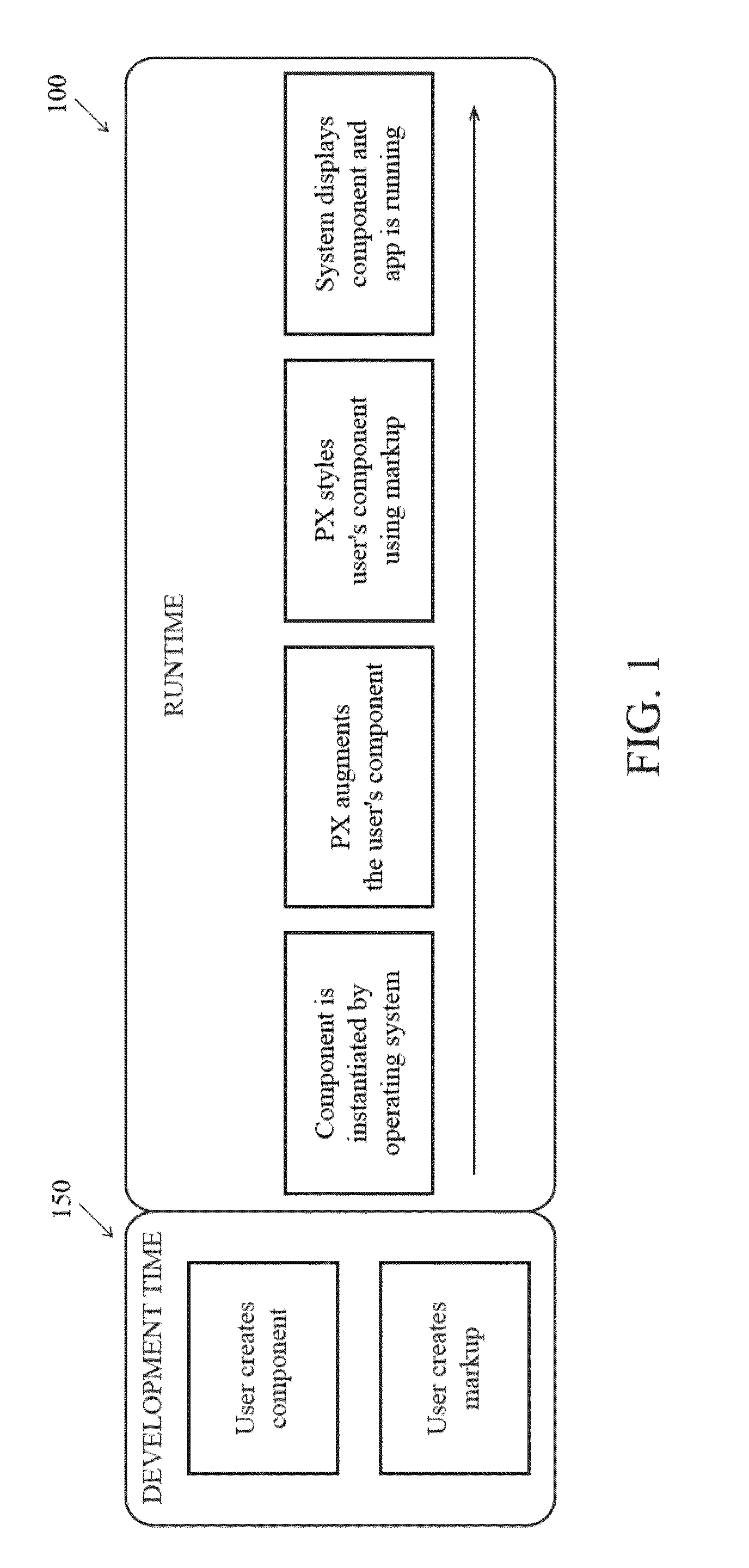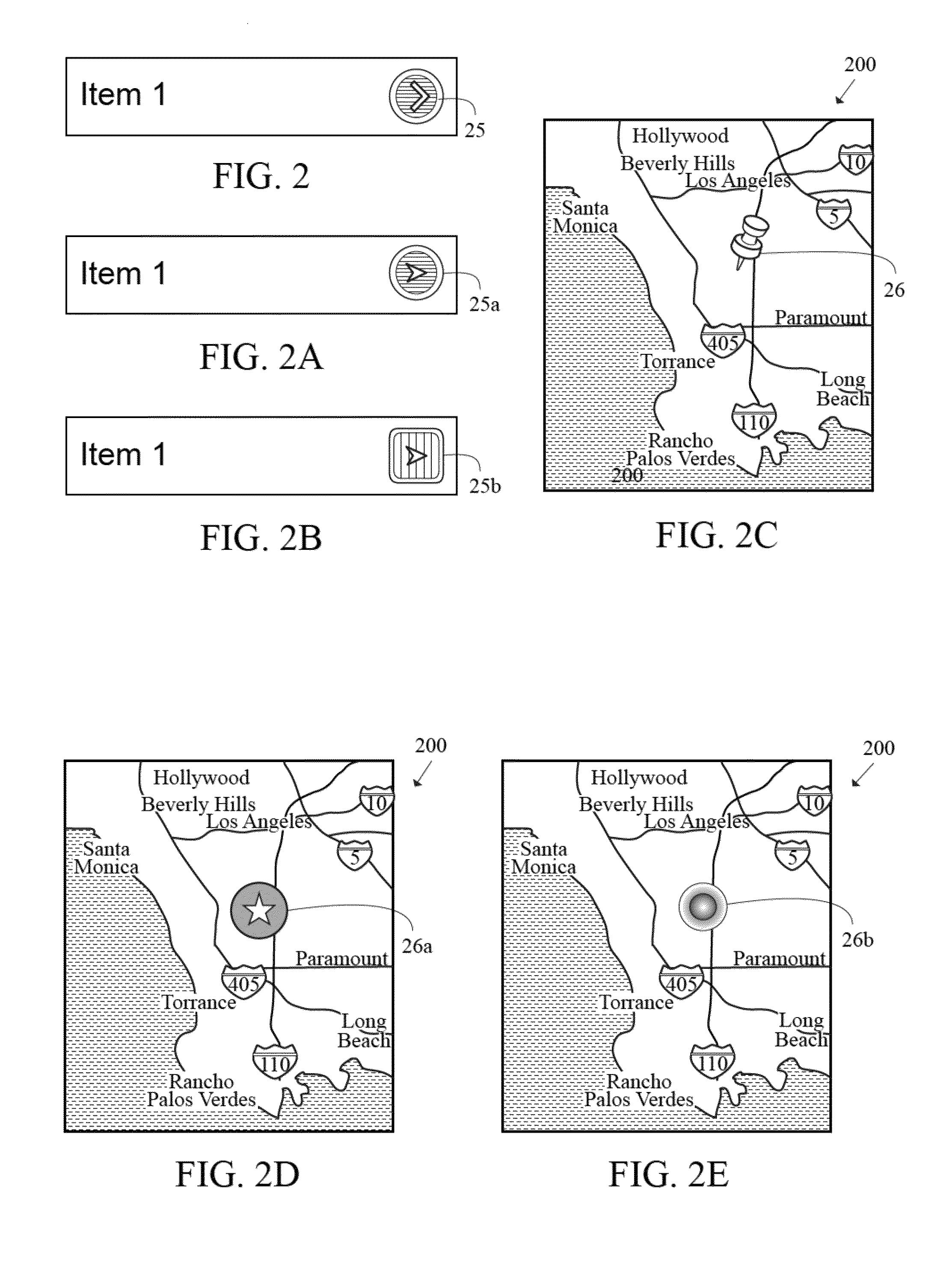Method and system for visual styling of visual elements for applications
- Summary
- Abstract
- Description
- Claims
- Application Information
AI Technical Summary
Benefits of technology
Problems solved by technology
Method used
Image
Examples
Embodiment Construction
[0055]The present invention comprises a method for the dynamic extension (e.g. subclassing) of objects to enable visual styling of on-screen elements. The method comprises the steps of: identifying a plurality of visual elements within a declarative markup (e.g. Cascading Style Sheet (CSS)) of a software application, generating a dynamic extension for each visual element of the plurality of elements, inputting methods into the dynamic extension for each visual element of the plurality of elements to manage the static and dynamic visual styling of an original object and assigning the dynamic extension for each visual element of the plurality of elements as the actual class of the object for each visual element of the plurality of elements. Preferably, the software application is a mobile software application. Alternatively, the software application is a web software application.
[0056]Another aspect of the present invention is a method for the dynamic extension (e.g. subclassing) of o...
PUM
 Login to View More
Login to View More Abstract
Description
Claims
Application Information
 Login to View More
Login to View More - R&D
- Intellectual Property
- Life Sciences
- Materials
- Tech Scout
- Unparalleled Data Quality
- Higher Quality Content
- 60% Fewer Hallucinations
Browse by: Latest US Patents, China's latest patents, Technical Efficacy Thesaurus, Application Domain, Technology Topic, Popular Technical Reports.
© 2025 PatSnap. All rights reserved.Legal|Privacy policy|Modern Slavery Act Transparency Statement|Sitemap|About US| Contact US: help@patsnap.com



